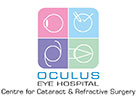
 What is cataract surgery with ‘eye drop anesthesia’?
What is cataract surgery with ‘eye drop anesthesia’?
Since the 1980s, cataract surgery has required the injection of anesthesia near the eye. Now advances in surgical techniques & technology have made it possible to perform the surgery using eye drops alone to make the eye numb.
What are the main advantages of not injecting anesthetic?
1. The pain of injection near the eye is avoided.
2. Potential common complications associated with the injection such as injury to blood vessels around the eye, injury to eye muscles, or lid muscles are avoided.
3. The rare but potentially serious complications such as perforation of the eye, injury to the optic nerve, misdirected injection into a blood vessel are also avoided.
It is safe for patients with heart disease?
Yes, it is safer for patients who have irregular heartbeats as the pain and anxiety of the injection can alter the heart rhythm in such patients.
We monitor the heart rate & ECG & oxygenation of the patient throughout the procedure & we find that there are fewer changes during the surgery with eye drop anesthesia.
Do the patient’s eyes move during the operation?
Yes, the patients can move their eyes during the operation. The surgeon however is operating with two instruments & can stabilize the eye during the operation.
Can I speak during the operation if I am uncomfortable?
Yes, you can tell us immediately if you have any problems. In fact, your surgeon will talk to you throughout the surgery & tell you what you will feel next.
 Why is a pad not applied at the end of surgery with eye drop anesthesia?
Why is a pad not applied at the end of surgery with eye drop anesthesia?
Since the eye muscles are not immobilized, the recovery from anesthesia is immediate. So there is no need to apply a pad – on your way home, all you need is a pair of sunglasses. More importantly, you can start using anti-infective & anti-inflammatory eye drops early in the post-operative period. This helps prevent complications from & improves surgical outcomes.
Are all doctors operating by this method?
A survey of members of the American Society of cataract & refractive surgeons revealed that the surgeons using eye drop anesthesia had increased from 45%in 1999 to 70% in 2008.
At Oculus eye hospital 99% cataract surgeries are done with eye drop anesthesia.
